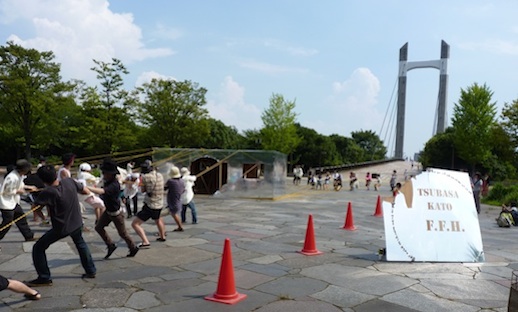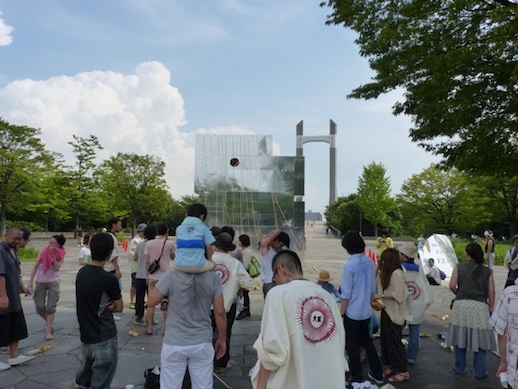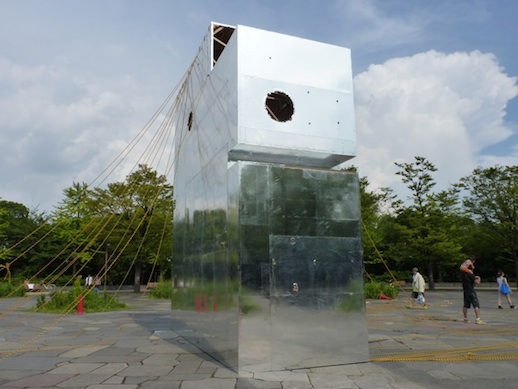Tsubasa Kato Pulls Us Together
Earlier this month, Kiba Park witnessed an art performance on a laborious scale. A huge plywood container (5.8 metre x 6.7 metre x 2.7 metre) was laid in the middle of the open square. Using dozens of ropes attached to the top and bottom, the artist Tsubasa Kato gathered friends and strangers to help him pull the heavy object upright — and then pull it back down again. A video of the ‘F.F.H.’ (Fukagawa, Future, Humanity) performance is now on show at SNAC gallery, just a short walk from the performance site.
It took quite a few tries before the object became upright. In the meantime, more passers-by decided to join in on the effort. Some watched from the sidelines — cries of “ooh” and “aaaah!” accompanied each attempt. Everyone was sweating and suffering in the typical August heat — all in the name of, well, art.

Kato is an artist searching for ways to make his work socially relevant and community-minded. He sees physical teamwork as positive social interaction, which can be even more important than the resulting documentation and exhibition. In order to raise the structure, participants had to use a kind of brute strength that is no longer a part of everyday life (outside of a gym or sports ground). The performance reminded me of pre-industrial times or Amish folk, and romantic images of villagers working together to raise a barn. In pre-industrial ages, this was a good reason for people to stay close and get along with each other. In Japan, Shinto festivals also bring people together in order to transport the heavy omikoshi, or portable shrines, from one place to another. Even though it is hard work, these events are seen primarily as celebrations.

After a successful day at Kiba Park, participants went away with good memories. They probably also felt some kind of ownership over the work. After all, it certainly wasn’t something the artist could pull off on his own!
On a more serious note, the performance also echoed the importance of working together in post-catastrophe Japan. It is in the most vulnerable of times that teamwork is a priceless commodity. Kato’s artwork acquires particular implications and new dimensions in 2011.

Emily Wakeling
Emily Wakeling



